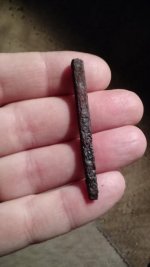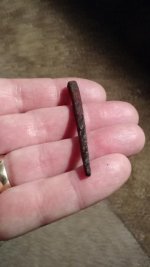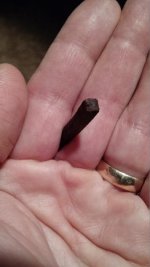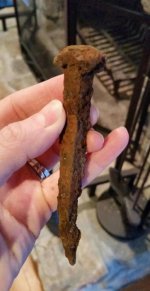Every square nail I have ever found had a head, this one does not?
Also, it is almost perfectly square, whereas most are usually "flatter" in other words rectangular in cross section.
This was from an 1840's farmhouse, was over 9" deep with other iron, and is not too rusty considering.
Could it have been forged?
Also, it is almost perfectly square, whereas most are usually "flatter" in other words rectangular in cross section.
This was from an 1840's farmhouse, was over 9" deep with other iron, and is not too rusty considering.
Could it have been forged?
Attachments
Last edited:





